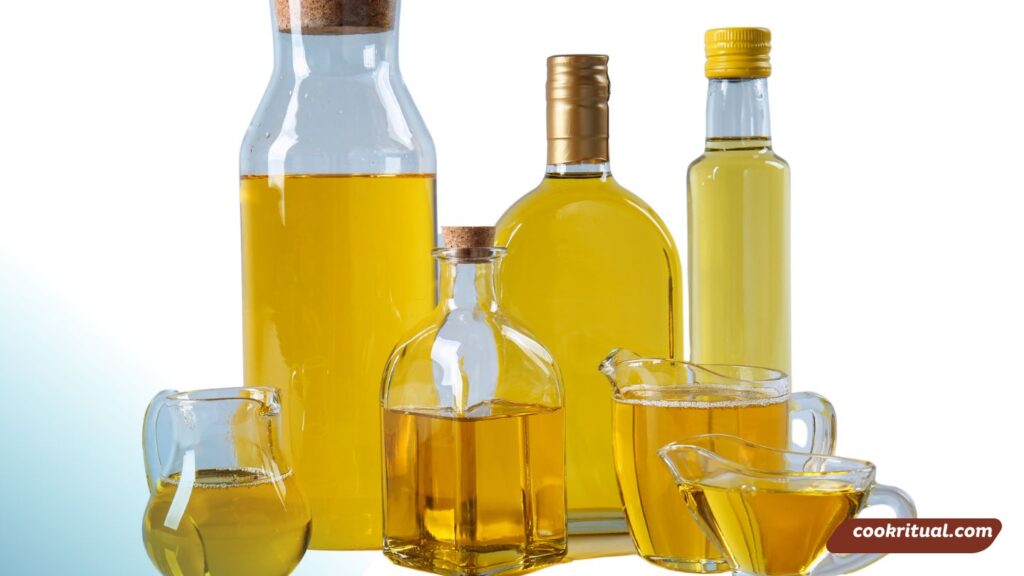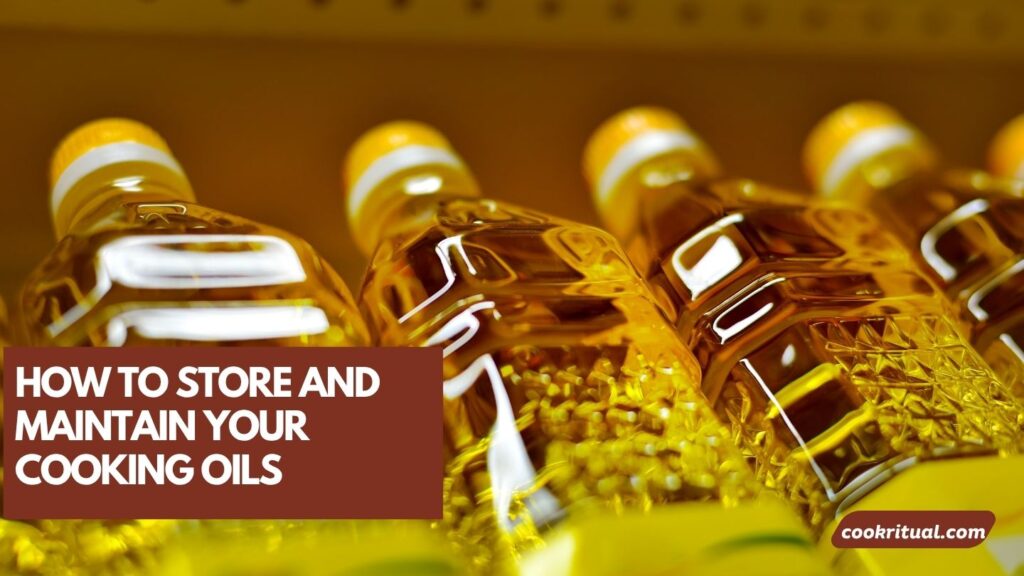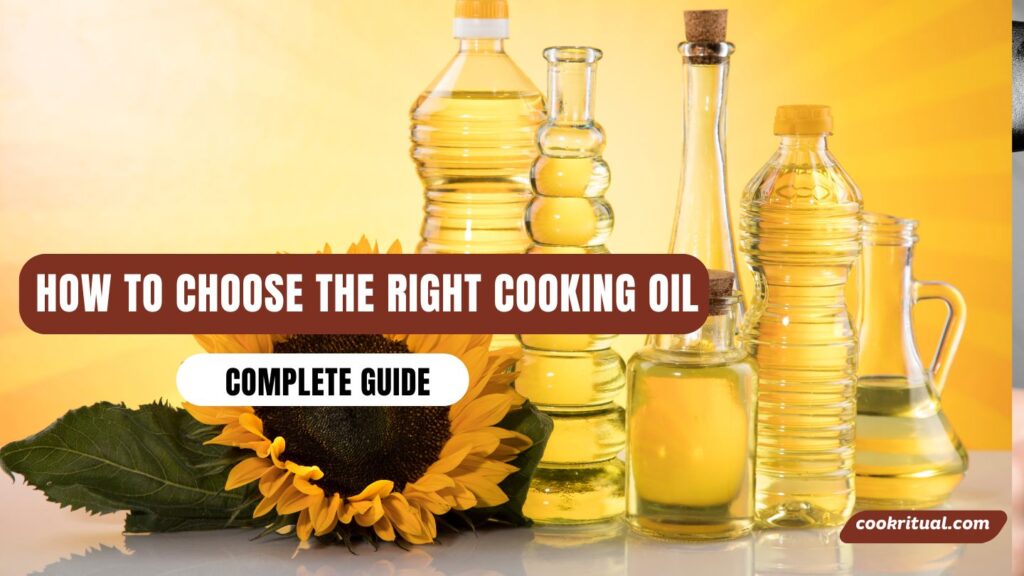Choosing the right cooking oil can be the difference between a heart-healthy meal and one that undermines your wellness goals. For health-conscious cooks and busy professionals alike, oil isn’t just a pantry staple—it’s a nutritional powerhouse (or pitfall) that impacts everything from flavor to digestion to long-term health.
With so many options on the shelf—extra virgin olive oil, avocado oil, coconut oil, canola, and more—it’s easy to feel overwhelmed. Some claim to be heart-healthy, others promise a high smoke point for stir-frying or grilling, and a few are ideal for baking. So, how do we actually make the right choice?
In this complete guide, we’ll simplify the process. We’ll walk through the different types of cooking oils, how to match them to your cooking methods, and what to consider when shopping. Plus, we’ll share pro tips from our years of kitchen experience and trusted health sources like the USDA and Harvard Health. Whether we’re meal prepping on Sunday or whipping up a weeknight dinner, the right oil can elevate both taste and nutrition.
Contents
- 1 Understanding the Different Types of Cooking Oils
- 2 Key Factors to Consider When Choosing a Cooking Oil
- 3 Health-Focused Comparison: Best Cooking Oils for Your Needs
- 4 Pros and Cons of Popular Cooking Oils
- 5 How to Store and Maintain Your Cooking Oils
- 6 Step-by-Step Guide: Choosing the Right Oil for Your Cooking Style
- 7 Expert Tips & Recommendations
- 8 FAQs About Cooking Oils
- 9 Buying Guide: How to Shop for the Best Cooking Oil
- 10 Final Thoughts: Takeaways & Next Steps
Understanding the Different Types of Cooking Oils
When we walk through the oil aisle, we see so many names and labels. Each oil has its own uses, flavors, and health perks. Let’s break them down into easy groups so we can choose what fits our kitchen needs.
Plant-Based Oils
These are made from seeds, fruits, or nuts. They’re great for cooking and dressings.
- Olive Oil – A popular oil known for its heart-healthy fats. Extra virgin olive oil is best for dressings and low-heat cooking. It’s rich in antioxidants and anti-inflammatory compounds. Learn more from Harvard Health.
- Avocado Oil – Has a mild taste and a high smoke point. Great for sautéing or grilling.
- Canola Oil – A budget-friendly option with a neutral flavor. It contains omega-3s and works well in baking or stir-frying.
- Sunflower Oil – Light flavor and high smoke point. Good for roasting and frying.
Animal-Based Fats
Though less common in some health-focused kitchens, these fats can add flavor and richness.
- Butter – Adds a creamy flavor but should be used in moderation.
- Ghee – Clarified butter with a nutty taste. It has a higher smoke point than regular butter and is often used in Ayurvedic cooking.
- Lard – Traditional in baking and frying, but high in saturated fats.
Specialty Oils
These oils are often used for their flavor or unique health benefits.
- Coconut Oil – Popular in paleo and keto diets. Solid at room temp and adds a tropical taste.
- Sesame Oil – Adds deep, toasty flavor to Asian dishes. Best used as a finishing oil.
- Flaxseed Oil – High in omega-3s but not for cooking. Use in smoothies or cold dishes only.
Each type of oil has a role. Knowing them helps us cook better and eat smarter.
Key Factors to Consider When Choosing a Cooking Oil

Not all oils work the same in every pan. Some are better for high heat. Others are best for salads. Let’s look at the main things we should think about before picking a bottle.
Smoke Point & Cooking Method Compatibility
The smoke point is the temp where oil starts to burn. Burned oil not only smells bad—it can create harmful compounds. For safe and tasty cooking, choose the right oil for your method.
- High-heat cooking (grilling, stir-frying): Avocado oil, refined coconut oil
- Medium-heat cooking (sautéing, baking): Olive oil, canola oil
- Low-heat or raw use (salads, finishing): Extra virgin olive oil, flaxseed oil
Read more about smoke points from the Cleveland Clinic.
Nutritional Profile & Health Benefits
Some oils are packed with good fats like monounsaturated and polyunsaturated fats, which help our heart and brain. Others have more saturated fats, which we should limit.
- Heart-healthy oils: Olive, avocado, canola
- Omega-3-rich oils: Flaxseed, walnut, canola
- Saturated fats: Coconut oil, palm oil, butter
The American Heart Association explains healthy vs. unhealthy fats.
Flavor Profile and Culinary Uses
Oils have flavors! Some are bold, others are mild. Choose based on the dish.
- Mild oils: Canola, grapeseed (good for baking or frying)
- Flavorful oils: Sesame, extra virgin olive oil (great in dressings and sauces)
Refined vs. Unrefined Oils
- Refined oils are filtered and treated. They have longer shelf lives and higher smoke points.
- Unrefined (cold-pressed) oils are minimally processed. They keep more nutrients and flavor but spoil faster.
Choose refined for high-heat cooking. Pick unrefined when flavor and nutrients matter more.
Health-Focused Comparison: Best Cooking Oils for Your Needs
With so many choices, it helps to pick oil based on our health and cooking goals. Here’s a simple table to guide us.
| Goal | Best Oils | Why They Work |
| Heart Health | Olive, canola, avocado | High in monounsaturated fats, low in saturated fat |
| High-Heat Cooking | Avocado, refined coconut | Very high smoke points, stable at high temps |
| Keto/Low-Carb Diets | Coconut, ghee | Higher in saturated fats, fewer carbs |
| Anti-Inflammatory Diet | Flaxseed, walnut, olive | Rich in omega-3s and antioxidants |
| Everyday Cooking | Canola, olive, sunflower | Budget-friendly, versatile, and nutritionally balanced |
Different oils serve different needs. We can mix and match based on what we’re cooking and how we want to feel.
Pros and Cons of Popular Cooking Oils
Every oil has its ups and downs. Some are great for cooking, others shine in nutrition. A few can do both. To make choosing easier, here’s a table comparing the most-used oils.
| Oil Type | Pros | Cons |
| Olive Oil | Heart-healthy, rich in antioxidants, good for dressings and low heat | Low smoke point, not ideal for high-heat cooking |
| Avocado Oil | High smoke point, neutral flavor, loaded with monounsaturated fats | Higher price, less shelf-stable |
| Canola Oil | Affordable, light flavor, contains omega-3s | Often highly refined, may be genetically modified (check labels) |
| Coconut Oil | Good for baking, stable at high heat, popular in keto diets | High in saturated fat; limit intake per AHA |
| Sunflower Oil | High smoke point, mild flavor | Low in omega-3s, high in omega-6s (imbalance may cause inflammation) |
| Flaxseed Oil | Excellent source of omega-3s, great in smoothies and dressings | Not for cooking; spoils quickly, must be kept cold |
| Sesame Oil | Deep, nutty flavor, ideal for finishing dishes | Low smoke point, strong flavor may not suit all recipes |
| Butter/Ghee | Rich flavor, good for baking, stable at medium heat | High in saturated fat, dairy-based (may not suit some diets) |
This table helps us compare what matters most—nutrition, taste, and how we cook.
How to Store and Maintain Your Cooking Oils

Once we pick the right oil, it’s just as important to store it the right way. Heat, air, and light can all make oil go bad. Here’s how we keep our oils fresh, safe, and ready to use.
Proper Storage Tips
- Keep oils in a cool, dark place, like a pantry or cupboard—not next to the stove.
- Use dark glass bottles if possible. They protect oil from light damage.
- Tightly seal the lid after every use to stop air from getting in.
Signs of Rancid or Expired Oils
Old oil smells off—like crayons, fish, or soap. If the taste is bitter or strange, toss it. Rancid oil not only ruins food but may contain harmful compounds. Learn more from the USDA about oil spoilage.
Shelf Life of Different Oils
| Oil Type | Shelf Life (Unopened) | Shelf Life (Opened) |
| Olive Oil | 18–24 months | 6–12 months |
| Avocado Oil | 12–18 months | 6–9 months |
| Canola Oil | 12 months | 6–12 months |
| Coconut Oil (refined) | 24 months | 12–18 months |
| Flaxseed Oil | 6–12 months (keep cold) | 3–6 months (refrigerate) |
| Sesame Oil | 12 months | 6–12 months |
| Ghee | 12 months (unrefrigerated) | 9–12 months |
To get the most out of our oils, we buy smaller bottles, rotate often, and store smart.
Step-by-Step Guide: Choosing the Right Oil for Your Cooking Style
With so many oils, it helps to narrow down the choice based on how we cook. Here’s a quick guide to match oil with method.
1. Ask: What Do We Cook Most?
- Stir-fries or grilling? High heat needs avocado or refined coconut oil.
- Salads and dips? Use extra virgin olive oil or flaxseed oil.
- Baking? Go with neutral oils like canola or light olive oil.
- All-purpose? Canola, sunflower, or blended vegetable oil works well.
2. Check Smoke Point
Each oil handles heat differently. Pick based on the method.
- Use this smoke point chart by Healthline to compare your favorites.
3. Think About Health Needs
- Watching cholesterol? Choose oils high in unsaturated fats—olive or avocado.
- Need more omega-3s? Try flaxseed or canola.
- Keto or dairy-free? Coconut oil or ghee may suit better.
4. Start Small and Rotate
It’s okay to have more than one oil. We keep a few options and use them based on the meal. Buying small bottles means less waste and more freshness.
Choosing oil doesn’t have to be hard. A little planning goes a long way toward better meals and better health.
Expert Tips & Recommendations
We’ve worked in all kinds of kitchens—from small apartments to big family homes. Over time, we’ve picked up some tried-and-true tips that help us get the best from our oils.
Use a Mix of Oils
No one oil does it all. Keep 2–3 options on hand:
- Extra virgin olive oil for salads and drizzling
- Avocado oil for high-heat cooking
- Canola or sunflower oil for everyday use
Buy in Smaller Batches
Oils can go bad before we finish a big bottle. We recommend buying smaller bottles more often, especially if we don’t cook with oil every day.
Choose Cold-Pressed or Unrefined When Possible
Unrefined oils have more flavor and nutrients. Use them in low-heat dishes or raw foods to keep those benefits intact. The USDA explains processing methods that affect oil quality.
Don’t Reuse Oil Too Many Times
Frying oil breaks down with each use. It can form unhealthy compounds when reheated over and over. Limit reuse to 1–2 times max, and strain it after each use if needed.
FAQs About Cooking Oils
Q: Is olive oil safe for frying?
A: Yes, but use light olive oil or refined olive oil for frying. They have higher smoke points than extra virgin.
Q: What’s the healthiest oil for daily cooking?
A: Olive oil and canola oil are great choices for everyday use. They’re heart-healthy and budget-friendly. Harvard Health supports olive oil for long-term health.
Q: Does oil need to be refrigerated?
A: Most oils don’t—just keep them in a cool, dark spot. But flaxseed oil and some nut oils should go in the fridge.
Q: Is coconut oil healthy?
A: It’s fine in small amounts. Coconut oil is high in saturated fat, so it’s best used in moderation, as recommended by the American Heart Association.
Buying Guide: How to Shop for the Best Cooking Oil
Reading labels can be confusing. Here’s what we look for when buying cooking oil at the store.
1. Check the Label
- Look for “cold-pressed” or “expeller-pressed” if you want less-processed oil.
- Avoid “partially hydrogenated oils.” These contain trans fats, which are harmful.
- Choose organic if you want fewer additives or pesticides.
2. Match the Oil to the Purpose
Don’t buy one oil for every need. Pick based on what you cook most often.
| Cooking Method | Best Oil Types |
| Frying or Searing | Avocado, sunflower, refined coconut |
| Roasting or Baking | Canola, light olive oil |
| Dressings or Drizzling | Extra virgin olive, flaxseed |
3. Pay Attention to Packaging
- Dark glass bottles protect oil from light.
- Plastic bottles are okay for short-term use but not ideal for long storage.
- Look for a “harvest date” or “best by” date for freshness.
Consumer Reports shares more on reading food labels.
Final Thoughts: Takeaways & Next Steps
Choosing the right cooking oil doesn’t have to be complicated. Once we understand how oils differ—by smoke point, fat type, and flavor—we can make better choices for our health and our kitchen.
Here’s what we recommend:
- Keep 2–3 types of oil on hand to suit different needs.
- Store oil properly to keep it fresh longer.
- Use healthy oils like olive, avocado, or canola for everyday meals.
- Read labels carefully and avoid heavily processed or hydrogenated options.
Cooking with the right oil means more flavor, better health, and less stress in the kitchen.


